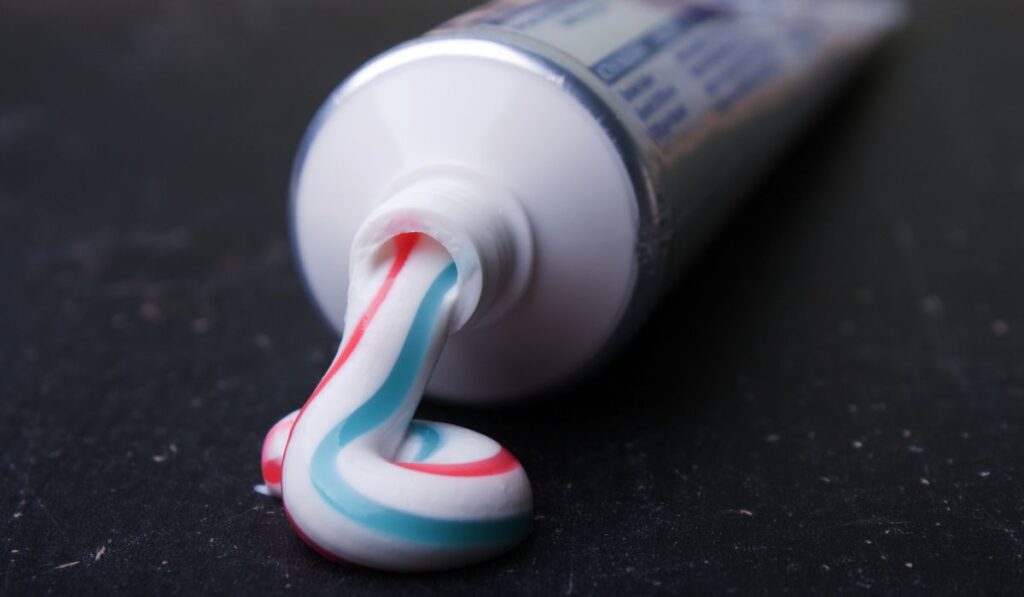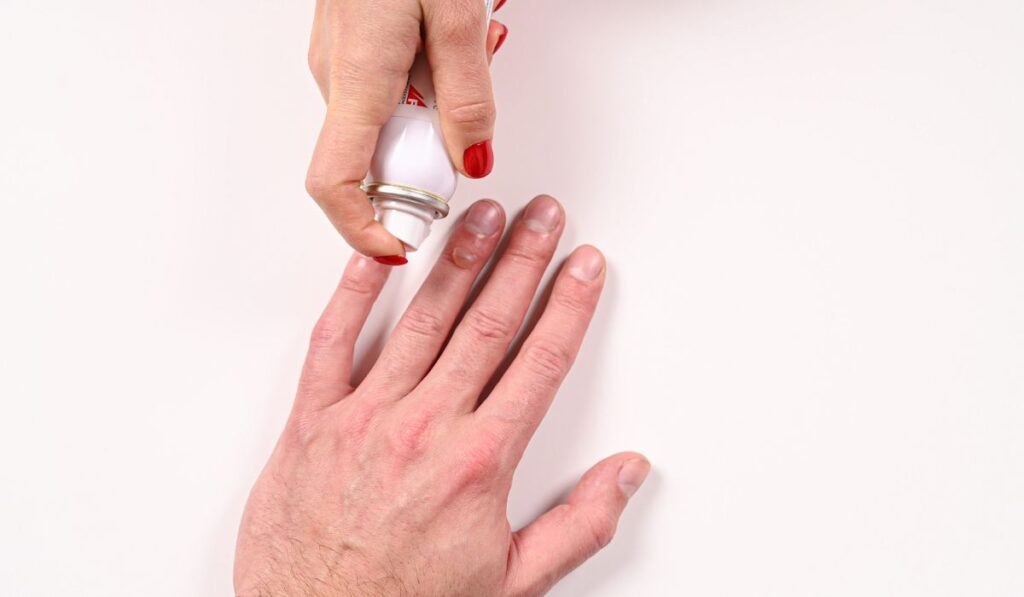Toothpaste contains ingredients like sodium bicarbonate and peroxide. It also has an amazing drying effect on almost anything. These attributes might make the dental care product seem ideal for treating burns. But will applying toothpaste to burns do any good?
Putting toothpaste on a burn is a terrible idea. Toothpaste ingredients can intensify the pain and worsen the burn, leading to an increased risk of infection and scarring. It also seals in heat underneath your skin. Stick to soaking the burn in cool water and applying ointment, aloe vera, or honey.
Let’s take a detailed look at why you should keep toothpaste far away from a burn, how to properly treat a burn at home, and types of home remedies that actually work.
Can Toothpaste Help Burns?

According to the American Academy of Dermatology (AAD), toothpaste doesn’t help treat burns. Modern toothpaste is often filled with harsh chemicals as the main ingredients.
While these ingredients work wonders for your teeth, they do the opposite when you apply them to burned skin. Instead of alleviating pain or clearing the burns, toothpaste causes infections.
Why You Shouldn’t Use Toothpaste On Burns
The abrasives and other harsh chemicals in toothpaste, like calcium and the strong mint, can cause more damage to the burned skin, making it more susceptible to infection or permanent discoloration.
Numerous studies also show that applying toothpaste to a burn can trap heat and bacteria underneath the skin, preventing the burn from cooling or healing and ultimately making things worse.
How To Properly Treat A Burn
Before you do anything, you’ll need to determine whether the burn is minor or major. You can often treat minor burns at home, but if it affects a sensitive part of your body, it’s best to get yourself to the hospital or call 911 immediately. Don’t try to treat it on your own or soak it in water unless the 911 operator advises that you do so.
Minor burns that you can quickly treat at home include:
- First-degree burns, which affect the outer skin layer and are usually red, swollen, and painful.
- Minor second-degree burns, which are less than three inches in diameter, red, swollen, and painful. They usually develop a blister that impacts the outer and underlying layers of the skin.
The American Academy of Dermatology advises that you to follow these steps to treat minor burns:
- Cool the burn first using cool (not ice-cold) water. Soak the burned region in the water or apply a cold, damp compress to the affected area for around 10 minutes. Avoid using ice on the burn as the extremely low temperature can cause further damage to the skin.
- Once you’ve cooled the burn, gently apply a layer of petroleum jelly (on Amazon) to protect it and wrap the area with a bandage.
- Don’t pop any blisters that crop up.
- If you’re in agonizing pain, take an over-the-counter painkiller like acetaminophen or ibuprofen.
Home Remedies For Burns

Here are some research-backed home remedies that you can apply to first-degree burns to ease the pain:
Cool Water
While you shouldn’t apply ice to the burned area, soaking it in cool water is highly recommended and could make a significant difference. This helps draw out heat from the burned part of your skin and reduces the pain.
Cold Compress
You can make a cold compress by dampening a towel with cold water. Cold compresses made from wet towels are suitable for burns on sensitive areas.
A cold compress draws out the heat trapped under your skin. Ensure that the surface of the compress is slippery to prevent it from sticking to the burn.
Aloe Vera
Aloe vera relieves your pain by reducing inflammation and promotes the healing of burns. Pure aloe gel products (on Amazon) work like a charm. If you have aloe vera growing at home, you can split a leaf in two and apply the gel inside directly to the burned region.
Antibiotic Ointments
Antibiotic ointments like Bacitracin and Neosporin from your first aid kit could eliminate bacteria from the burn area and promote healing. These ointments contain pain-relieving ingredients like bacitracin zinc and neomycin sulfate that take away the discomfort.
Honey
Honey, a natural antimicrobial and anti-inflammatory, was used by many cultures in the past as a home remedy, and presently, researchers have discovered that it promotes healing when applied to burns.
A literature review published in the Annals of Burns and Fire Disasters indicates that honey has a long-standing record of treating burns, scalds, and infected wounds due to its ability to promote healing and reduce inflammation.
Further studies substantiated the healing benefits of honey after researchers looked at the effects of honey-based ointments on healing full-thickness and infected burn wounds. Compared to a povidone-iodine treatment, honey emerged as a faster and more effective remedy.
You could try it out by spreading some teaspoons of honey on the burn or simply dip a piece of gauze in it before applying the sweet stuff.
Here’s a breakdown of some home remedies you can use and those you should avoid applying to burns:
| Home Remedies You Can Use on Burns | Home Remedies To Avoid |
| Cool water | Toothpaste |
| Cold compress | Butter |
| Aloe vera | Oils (coconut and olive oil) |
| Antibiotic ointment | Ice |
| Honey | Mud |
Home remedies are ideal options for quickly treating burns. However, in some cases, they might do more harm than good. If you have no clue how to treat a burn, it would be best to seek medical help, even if it seems minor.
As a rule of thumb: save your toothpaste for your toothbrush!


